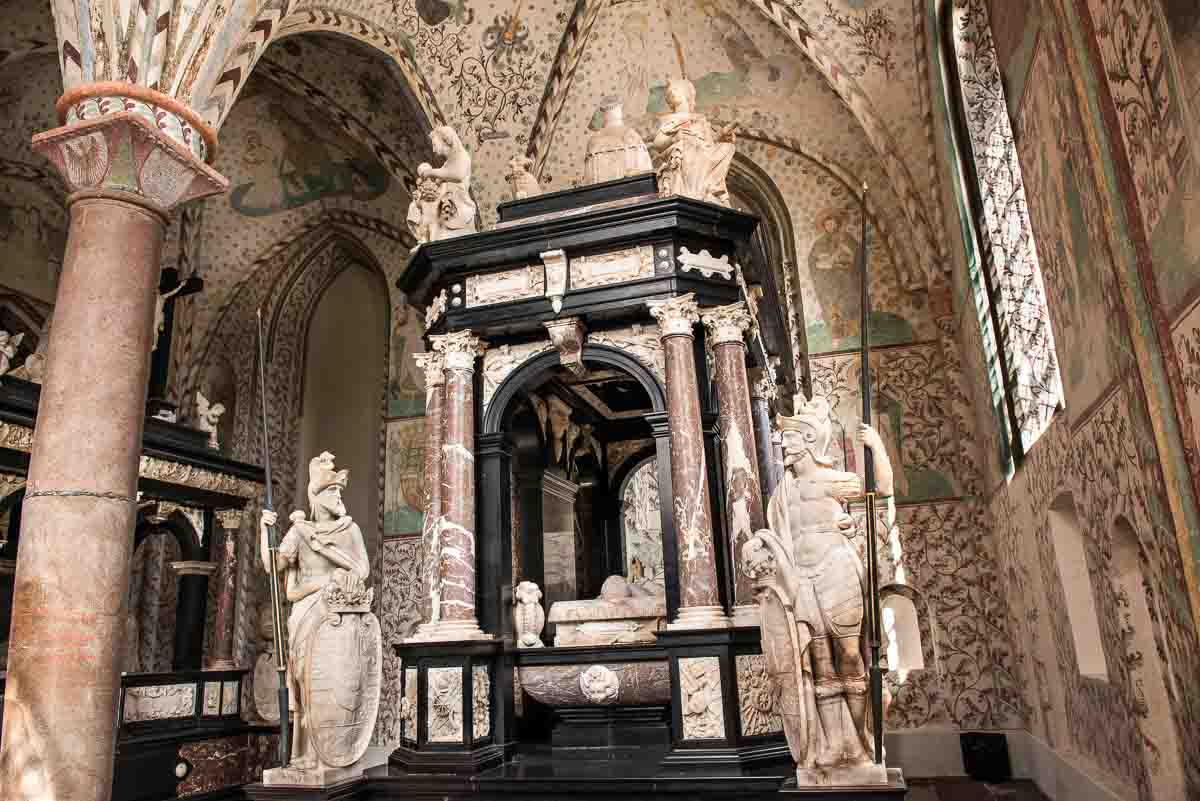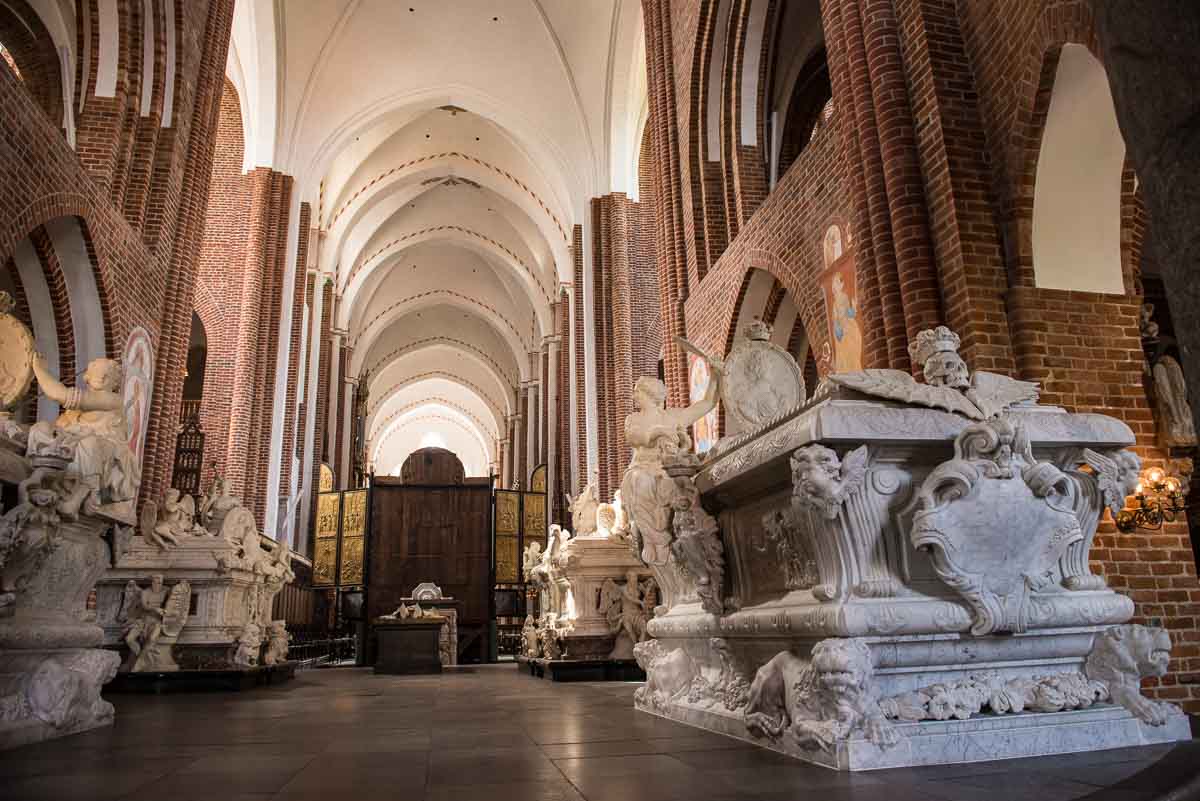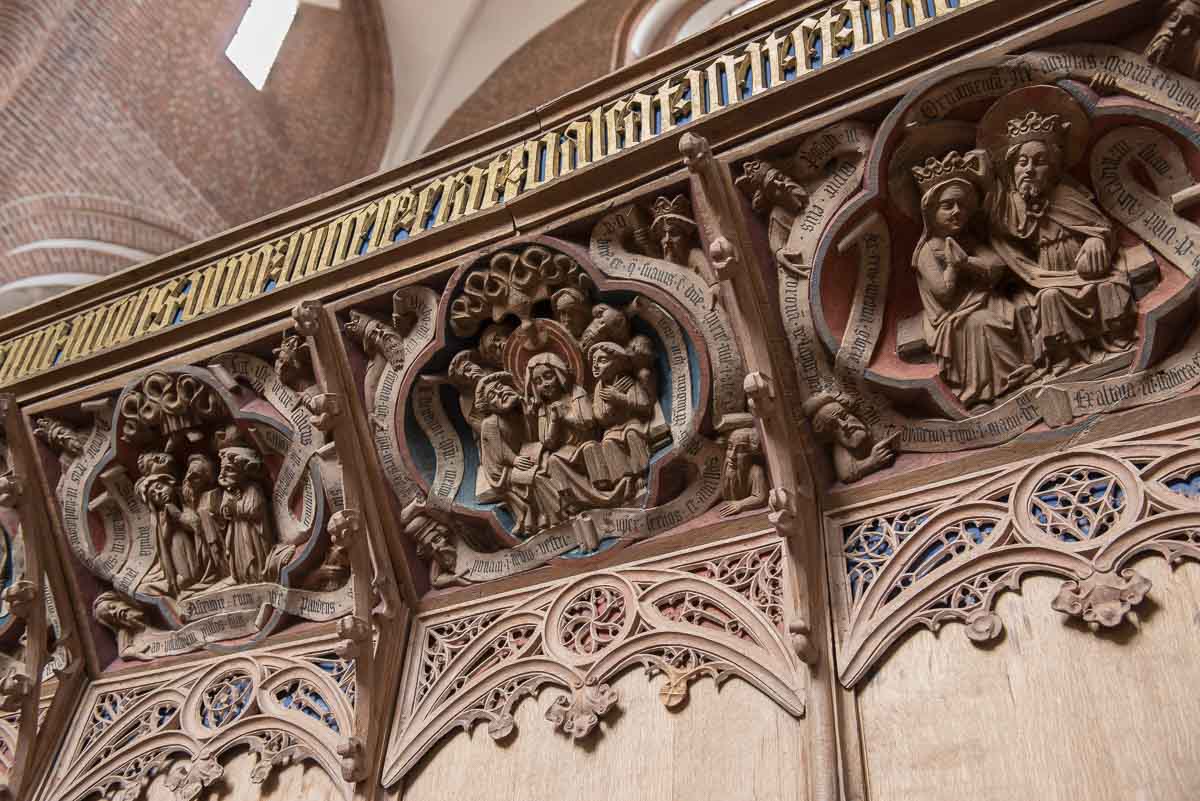
The Roskilde Cathedral (Domkirke) of the ancient capital of Denmark is the first Gothic cathedral to be built of brick. Because of this distinction, it's a UNESCO World Heritage Site.
Built during the 12th and 13th centuries, it once featured extensive frescoes on the walls and ceilings. Unfortunately, during the Reformation furor of Northern Europe, like many ancient Catholic churches, the Roskilde Cathedral suffered a “makeover” of iconoclasm. In the case of the Domkirke, this meant all the original frescoes were whitewashed. Later, when sanity took hold again, they tried to uncover some of the frescoes, but the task mostly was in vain. Here is one chapel where the work was done, and you can see the pale simulacra of the original works.

The various chapels of the cathedral now serve primarily as the burial vaults for Danish kings, right up to the current day. The grave memorials themselves are a veritable art history lesson as the installations date from the 13th to the 20th Century. Danish Gothic right up through Danish Modern design. This crypt dates from the early 17th Century.

For some reason, when the Roskilde Cathedral was vandalized by the Protestant reformers, they left the slightly crude, but nevertheless beautiful carvings over the choir seats. The carvings below them, though, were removed, and replaced with bland wooden panels, as you can see in the picture. Maybe the carvings' very state of rough workmanship is what saved them.
The Roskilde Cathedral is a UNESCO World Heritage site in Denmark. For a complete list of the Danish UNESCO sites, with links to the ones we've visited, click the link.
Roskilde can be reached easily by car from Copenhagen in about half an hour. Or you can take a train from the Copenhagen Central Station and be in Roskilde in about 24 minutes.
Up Your Travel Skills
Looking to book your next trip? Use these resources that are tried and tested by us. First, to get our best travel tips, sign up for our email newsletter. Then, be sure to start your reading with our Resources Page where we highlight all the great travel companies and products that we trust. Travel Accessories: Check out our list of all the accessories we carry to make getting there and being there a lot easier. Credit Cards: See our detailed post on how to choose the right travel rewards credit card for you. Flights: Start finding the very best flight deals by subscribing to Thrifty Traveler. Book your Hotel: Find the best prices on hotels with Booking.com. See all of the gear and books we like in one place on our Amazon shop.Got a comment on this post? Join the conversation on Facebook, Instagram, or Threads and share your thoughts!


Comments are closed.